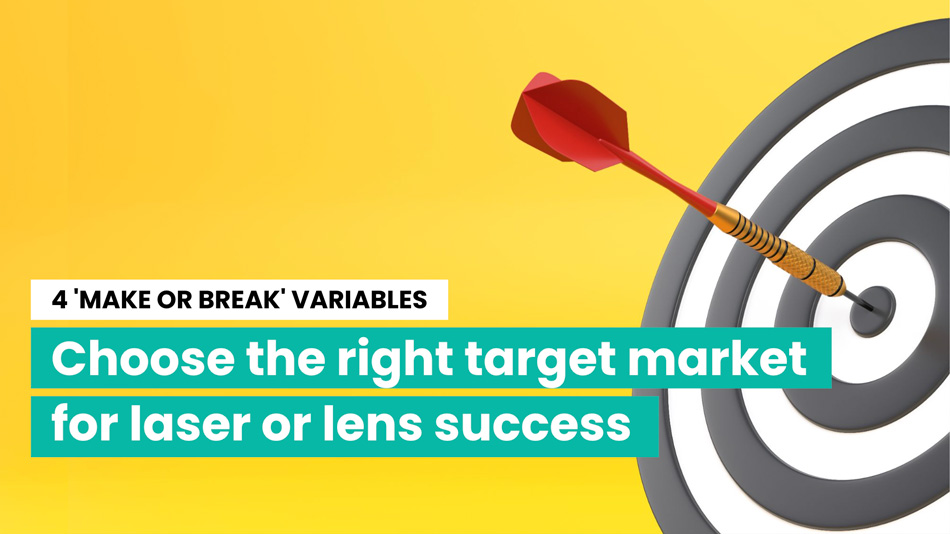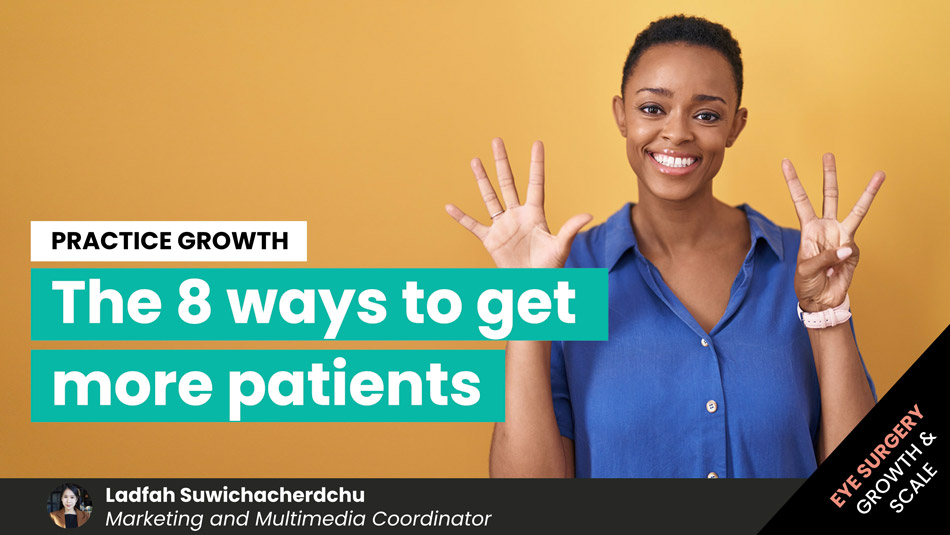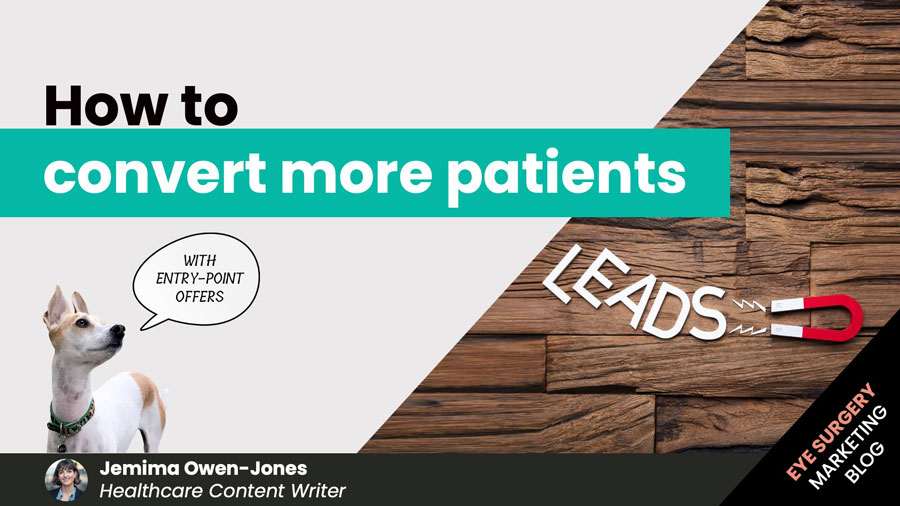
How to convert more patients with entry-point offers
The most valuable businesses worldwide understand that the costliest marketing activity any business undertakes is customer acquisition. It’s why Amazon offers a 30-day free trial for Prime. It’s why Uber Eats give you up to £10 off your first order. It’s the reason LEGO gives away a free magazine, and it’s the reason Ebay gives you a number of free listings every month.
Their goal is to acquire a new customer. Profits come later. The same is true for patient acquisition.
In this article, we reveal one of the single most powerful additions you can make to your marketing – the entry-point offer.
What is the difference between an entry-point offer and your core offer?
First, don’t let the word “offer” confuse the issue. We’re not talking about “sales” or “discounts”. Your core offer, for example, is what you promise your patient in exchange for their money (e.g. the transformation they can achieve as a result of having cataract or refractive surgery with you). This is what you offer at the first appointment. The main reason for this is because no one can have surgery without first completing an appointment, therefore it is pointless to sell surgery before that point in the relationship-building process.
An entry-point can be any splintered part of your core offer (i.e. patient education, assessment, treatment planning). The purpose of your entry-point offer is to convert a lead into a consumer – or to move the patient down-funnel through the customer journey.
There are two types of entry-point offers
Your entry-point offer requires a relatively small commitment of money or time. We have found a commitment of time to be more apt for the cataract and refractive surgery market because you’re providing a service, not a product. Some good examples include:
- A free informative guide that prospects can download from your website in exchange for contact information
- A free webinar or seminar for which prospects need to register
- A constructive phone call that offers value, not just selling an appointment
- A free virtual appointment over Zoom
- A free 15-30-minute initial screening
- A paid face-to-face consultation
Note that an entry-point offer should take longer than 10 minutes to consume – and up to 90 minutes, in the case of free first appointments. It needs to be a genuine investment of time or else the prospect will consume the offer without feeling properly invested.
What makes a good entry-point offer?
Your goal with an entry-point offer is to get prospective patients to shift the relationship with you from being a lead to acting as a consumer. As you’ll see, once someone invests time in your service, they’re more likely to invest in more complex services down the funnel.
But how can you turn a lead into a consumer before performing treatment? By offering an entry-point offer that is high-value, low-risk, and provides the prospective patient with an ah-ha moment that shows them you can deliver on the transformation they seek.
Consumers today are cautious, and rightly so. Economic uncertainty, lockdowns, and job losses have motivated us to save money. For many young people, it might be the first time in their lives they’ve acquired discretionary savings. However, underneath that frugal mindset still lies a consumer with a desire for transformation.
Many prospective patients who’ve always desired the effects of eye surgery are now sniffing your digital presence for a whiff of assurance that confirms your service is a worthy use of their savings. You need to show them that it is – but subtly.
The crucial thing here is not to go in too strong. You don’t want to scare your leads away with aggressive marketing that says, “Hey! Book an appointment for eye surgery now”. They aren’t ready for this yet. Just like you wouldn’t propose marriage on a first date, asking a website visitor to elect treatment doesn’t make sense. It’s far too early in the relationship. Your leads want to deepen their commitment without putting too much skin in the game.
The best way to approach this is with an entry-point offer. This is a high-value, low-risk offer that lets your prospects sample your service without feeling like they’re in too deep.
Make your entry-point offer irresistible
The key to making a compelling entry-point offer is to make it so intriguing that your leads are unable to resist.
The best way to make the entry-point offer irresistible is by offering something of high value for free, or at cost. In some cases, you may need to offer it at a loss.
Remember, you are not trying to make a living from selling entry-point offers. You are trying to acquire customers because there is nothing more valuable than a list of customers.
Entry-point offers should deliver an “ah-ha” moment
A key element of any entry-point offer is the encouragement of the “ah-ha” moment. This is the prospect’s realisation that they have a problem that you can solve. For example, suppose your entry-point offer is a free guide or a webinar. In that case, it needs to convey how your service can take the prospect from a dissatisfied before state to satisfied after state. Communicating this transformation effectively, helps them build a convincing argument in their minds.
You can stimulate an ah-ha moment when you perform a visual acuity test on the prospective patient during an initial assessment or a paid consultation. In these situations, you need to dramatise what uncorrected visual acuity will feel like. And, you need to communicate that that is what their likely outcome will feel like. With ametropes, phoropters can be an excellent ally when trying to achieve this goal. A useful tool with presbyopes is a contact lens trial.
The evidence behind entry-point offers
One of the costliest (in time, money, resources) marketing activities your business will undertake is customer acquisition. The bad news is that cataract and refractive surgery depends heavily on customer acquisition. There are few repeat customers; you’re typically aiming for “one and done”.The good news is that once you’ve acquired your customer, you don’t need to pay to acquire them again.
A good entry-point offer increases conversion rates further down the funnel. For example,
- Free initial assessments create more opportunities than they cost. More people in the clinic results in more surgeries.
- Conversion rates at paid first consultations increase if the patient has already had a free virtual appointment.
- Patients convert at higher rates after they’ve attended free patient education events, compared to patients who didn’t attend those same events.
How do you use your entry-point offer?
A fraction of your website visitors will become leads. Leads are people who signal that they’re interested in your core offer by providing you with contact information (i.e. their name, phone number, email address). Visitors become leads by exchanging their contact information for value (e.g. a self-test completion, a short document download, a chatbot interaction, a phone call to your practice). Thus, one purpose of your website is to generate leads, and offering these “lead magnets” is important as a transitional call to action on every marketing channel you use (e.g. your website, your ads, your social media). Again, a common transitional call to action is a self-test. The purpose of the self-test is to convert visitors into leads.
You can see an example of where we’d place a transitional call to action on the front page in the schematic below (Figure 1). We advise our clients to do something similar on every page of their website.
After a visitor has become a lead, your next task is to convert that lead into a consumer. Thus, your entry-point offer becomes your big call to action. Again, a typical big call to action (or entry-point offer) is a free appointment. The purpose of the free appointment is to convert leads into consumers.
In Figure 1, you’ll notice we advise placing your big call to action at the top right of your website on every page. We further advise repeating it over your hero image (to the right of your transitional call to action) and multiple times throughout the page and the site.
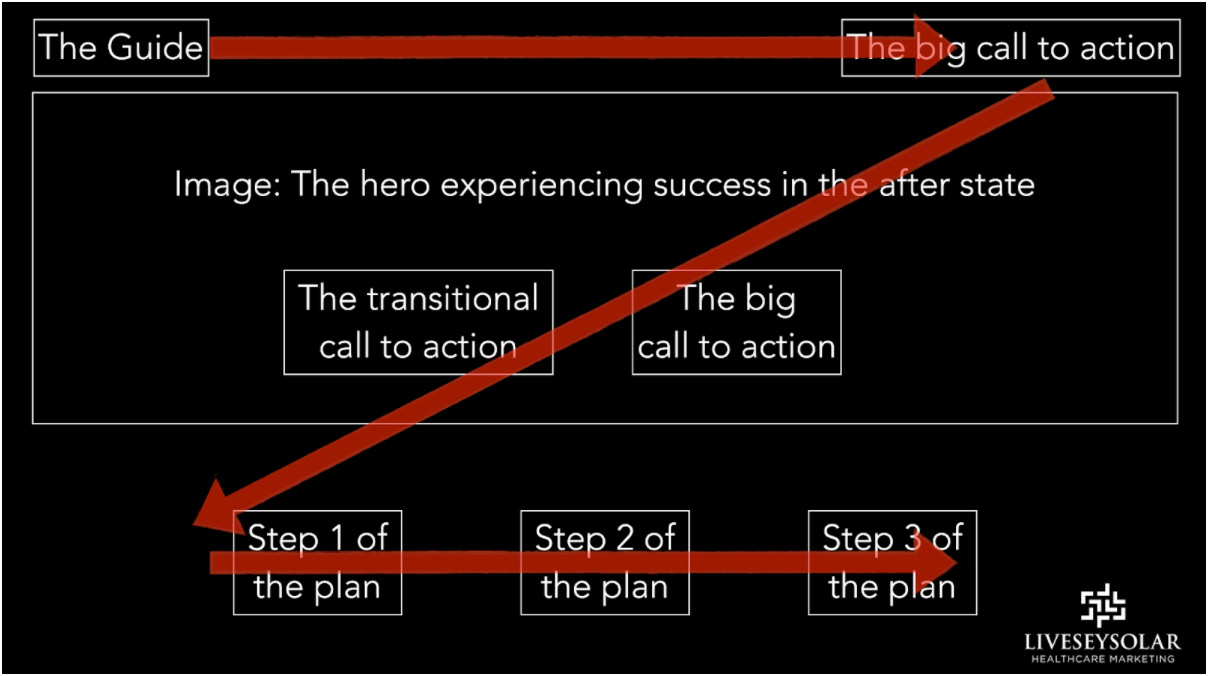
Figure 1: Home Page Schematic. The red arrows represent typical eye-tracking results
Here are some examples from live websites we’ve designed that employ this model to successful effect. Note how the entry-point offer is the most visible button on the page, which we often set in a dominant colour, like red or orange. Note further how we often set the transitional call to action button in a colour that is recessive or even as a ghost button.
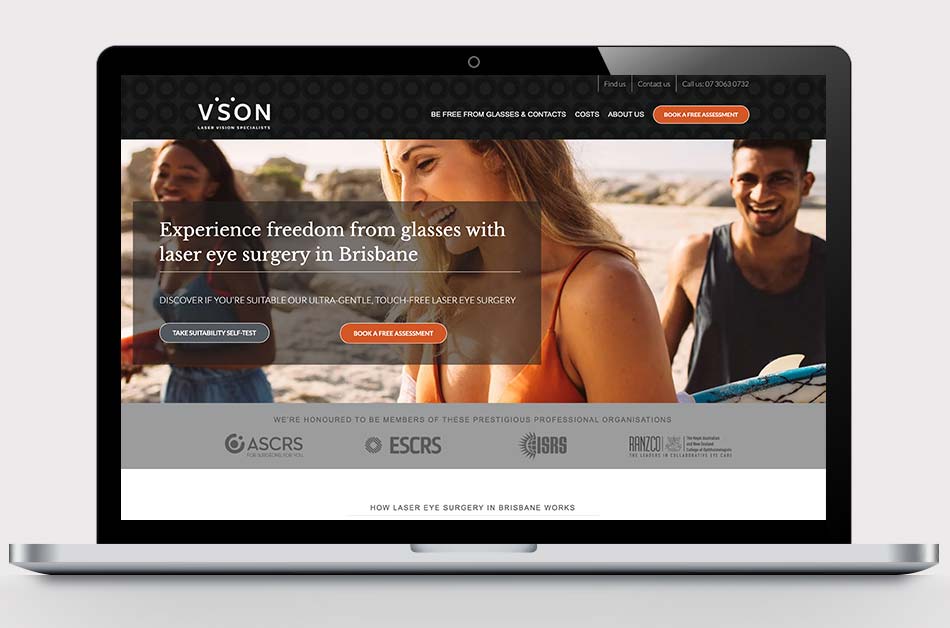
Figure 2: vson.com.au’s entry point offer is “Book a Free Assessment”
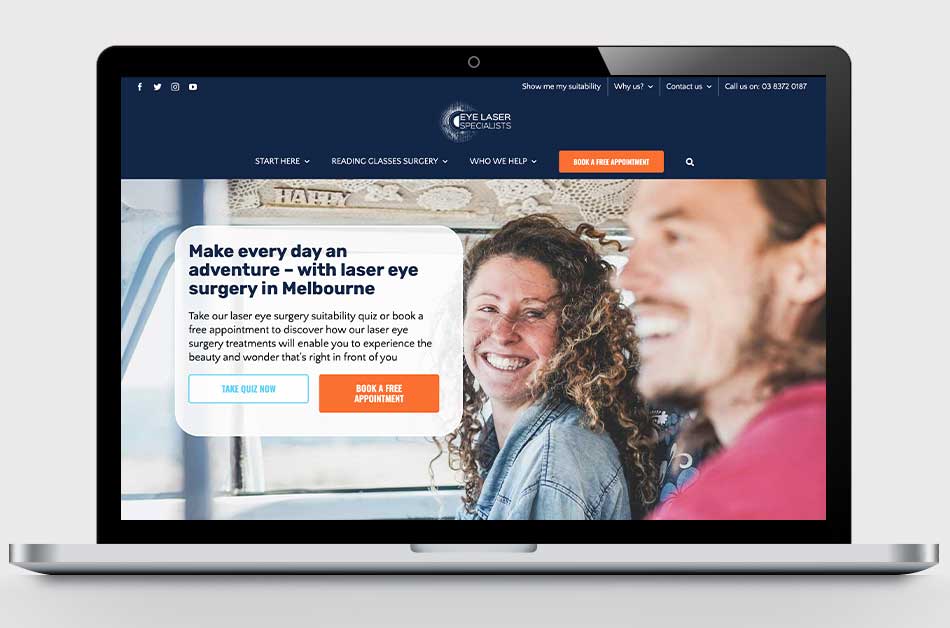
Figure 3: eyelaserspecialists.com.au‘s entry point offer is “Book a Free Appointment”
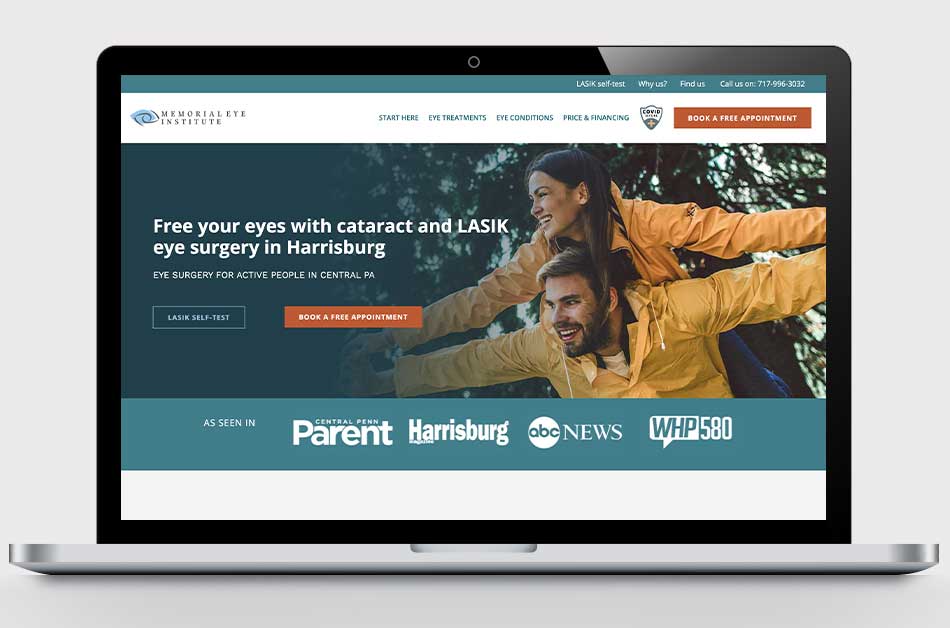
Figure 4: memorialeye.com ’s entry point offer is “Book a Free Assessment”
Value first, profits later
The strategy behind the entry-point offer is simple: Convert the maximum number of leads into paying customers. Even at the expense of your profit margin, with the understanding that acquiring a paying patient will deliver profit. Place your entry-point offer as your big call to action. And finally, avoid the temptation to sell your core offer too early in the relationship-building process.
NOTE: The best way to answer that nagging question about practice growth or marketing or patient volume in the back of your mind is to book a free 15-minute compatibility call. Get some options and go away with a clear idea of what’s possible.
About the author

Jemima Owen-Jones
Content Specialist
Jemima is a LiveseySolar’s content and copywriter. As a Digital Marketer direct-response copywriting specialist, Jemima has learned the secret strategies for crafting gripping sales copy that seizes attention and sparks desire for our client’s products and services. She’s here to empathise with our client’s target markets and inspire them to take action. As the writer, she hopes to engage their audience in every way possible: through their website; their ads; in their blog posts and emails to ensure she communicates their message and accomplishes their marketing goals. In doing so, she’s able to get more conversions for them as a result.
Related Posts
Meet our Co-Founders
We’re passionate about helping leaders of high-quality, growth-minded practice owners double their practice revenue
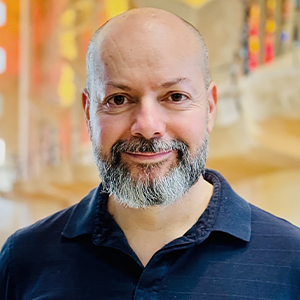
Rod Solar
Founder & Scalable Business Advisor
For over 20 years, I’ve helped ophthalmology entrepreneurs scale their private practices. I specialise in doubling revenue within three years by offering a proven framework, hands-on experience, and a team of experts who implement what works. We take the guesswork out of growth and scale, so you can focus on delivering exceptional patient care while maximising the value of your business.
LiveseySolar completely transformed the way we were approaching this… We’ve gone from having just the dream of having a practice to having a practice up and running with people making inquiries and booking for procedures… It’s extremely pleasing. We feel lucky we connected with LiveseySolar.
— Dr Matthew Russell, MBChB, FRANZCO, specialist ophthalmic surgeon and founder of VSON and OKKO

Laura Livesey
Founder & CEO
I’m the co-founder & CEO of LiveseySolar. I’ve developed powerful eye surgery marketing systems that increase patient volumes and profits for doctors, clinics, and hospitals, since 1997.
Rod and Laura know as much about marketing surgery to patients as I know about performing it. They are an expert in the field of laser eye surgery marketing. They know this industry inside out. I believe that they could help many companies in a variety of areas including marketing materials, sales training and marketing support for doctors.
— Prof. Dan Reinstein, MD MA FRSC DABO, founder of the London Vision Clinic, UK







